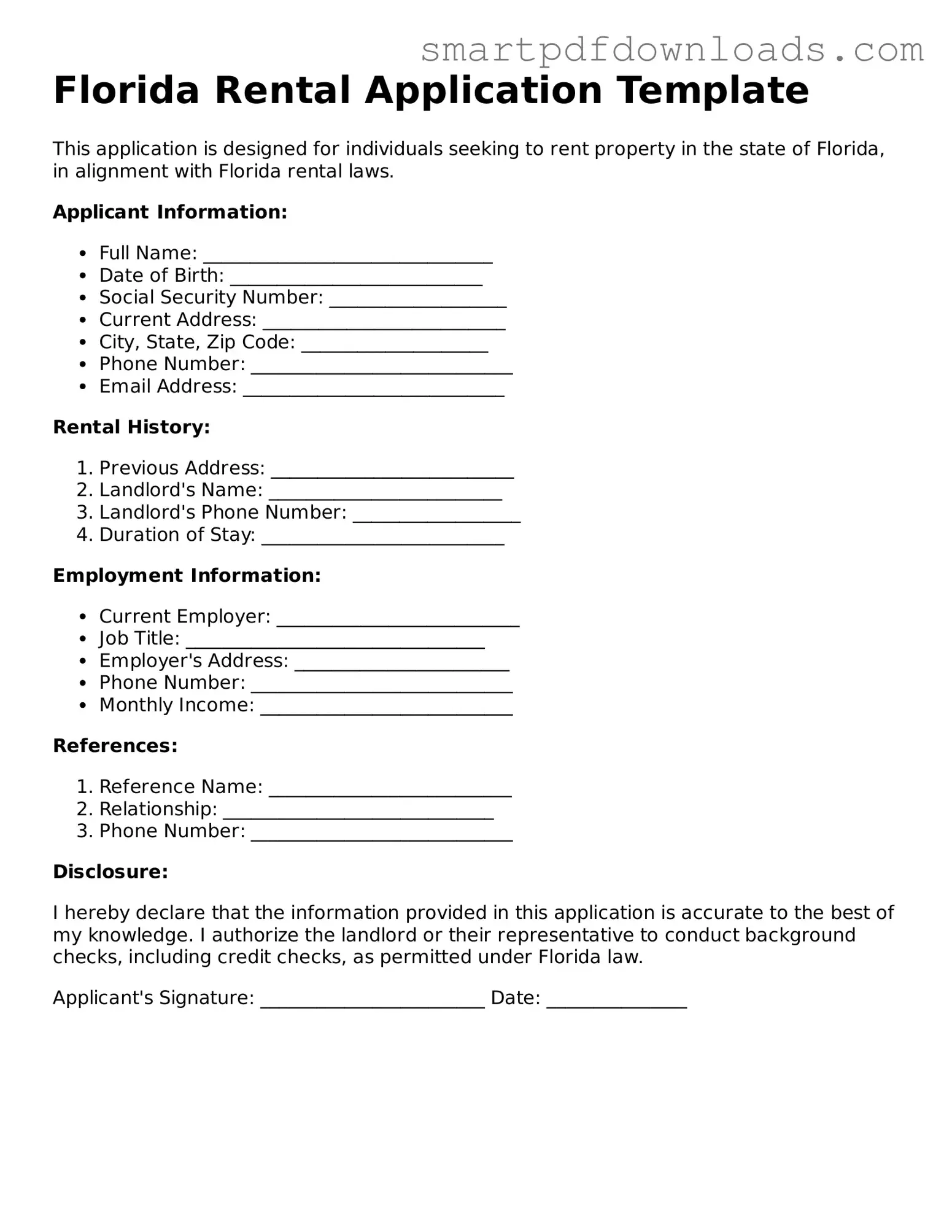Legal Rental Application Form for the State of Florida
The Florida Rental Application form is a document used by landlords to gather essential information about prospective tenants. This form helps landlords assess the suitability of applicants for rental properties. Understanding its components can empower both renters and landlords in the leasing process.
Edit Rental Application Online
